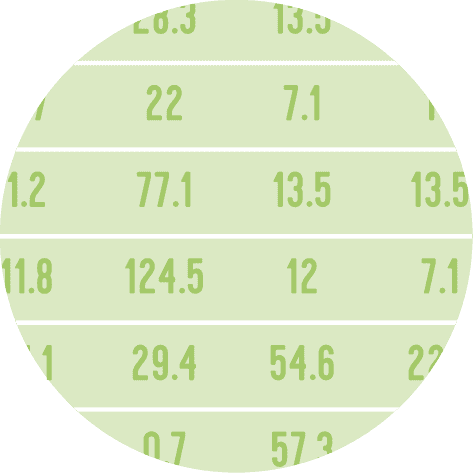Libraries
First, you need to install plottable with the following command:
pip install plottable
We'll also need the following libraries:
- pandas for creating a dataframe with our data
- matplotlib for customizing the table and display it
import matplotlib.pyplot as plt
import pandas as pd
from plottable import TableDataset
Since most of the time, when we want to display a beautiful table, it comes from a pandas dataframe, we'll create a (simple) pandas df and use it as the starting point we want to make nice.
data = {'Score': [80, 60, 20, 30, 90],
'Value': [50.42, 17.01, 42.90, 6.83, 92.06],
'Comment': ['Nice', 'Cool', 'Fun', 'Bad', 'Okay']}
df = pd.DataFrame(data)Change color of one column
In order to access one specific column, we use the columns attribute from the Table() and then use:
set_facecolor()function for the background colorset_fontcolor()function for the text color
In our case, we change the background color of the 'Value' column and the text color of the 'Score' column
# Init a figure
fig, ax = plt.subplots(figsize=(5, 5))
# Create the Table() object
tab = Table(df)
# Change the color
tab.columns['Value'].set_facecolor("lightblue")
tab.columns['Score'].set_fontcolor("green")
# Display the output
plt.show()Change color of all columns
If we want to apply the same color for every cell, the easiest way is to iterate over all our columns and use the set_facecolor() or set_fontcolor() at each iteration.
# Init a figure
fig, ax = plt.subplots(figsize=(5, 5))
# Create the Table() object
tab = Table(df)
# Change the color
for col in df.columns:
tab.columns[col].set_facecolor("lightblue")
tab.columns[col].set_fontcolor("red")
# Display the output
plt.show()Keep in mind that the index of our table is not in our columns. However, in a similar way as the columns, you can access it with tab.columns['index']
Change color of one row
You can access rows with the rows attribute from the Table() and use the set_facecolor() or set_fontcolor(), depending on what you want to change.
# Init a figure
fig, ax = plt.subplots(figsize=(5, 5))
# Create the Table() object
tab = Table(df)
# Change the color
tab.rows[1].set_facecolor("lightblue")
tab.rows[2].set_fontcolor("red")
# Display the output
plt.show()Change color of all rows
Plottable has a nice feature that allows us to change color only of even or odd rows. You can use the even_row_color and odd_row_color when creating the Table object.
# Init a figure
fig, ax = plt.subplots(figsize=(5, 5))
# Create the Table() object
tab = Table(df,
even_row_color='lightgrey',
odd_row_color='orange')
# Display the output
plt.show()Use a gradient of colors
We need to import new elements from both plottable and matplotlib:
- a colormap from matplotlib: in our case we'll use a gradient of blues
ColumnDefinitionin order to specify the cmap we want for which column
The main interest of this is that the color is proportionaly stronger according to values in the cell.
from matplotlib.cm import Blues
from plottable import ColumnDefinition
# Init a figure
fig, ax = plt.subplots(figsize=(5, 5))
# Create the Table() object
tab = Table(df,
column_definitions=[ColumnDefinition(name="Score", cmap=Blues)])
# Display the output
plt.show()Going further
This post explains the how to change colors with the plottable library.
You might be interested in:







